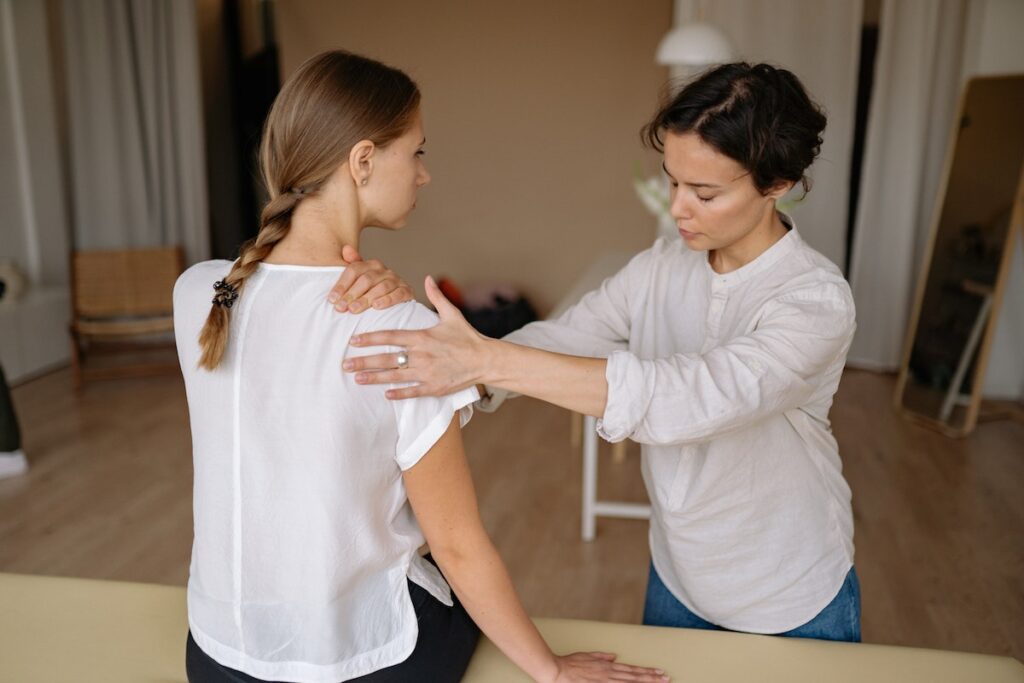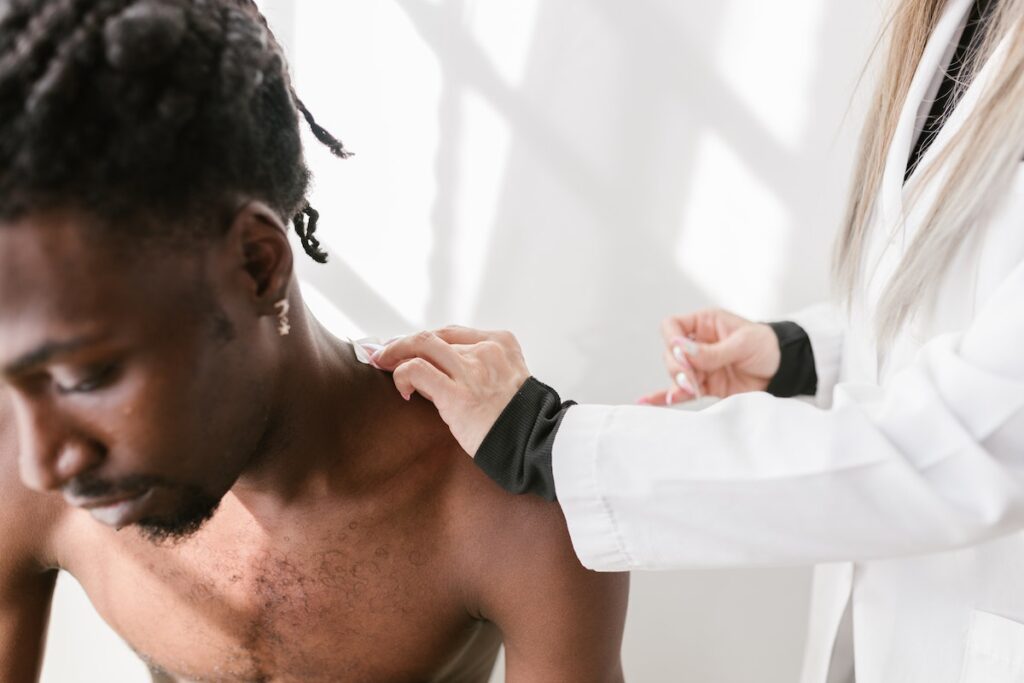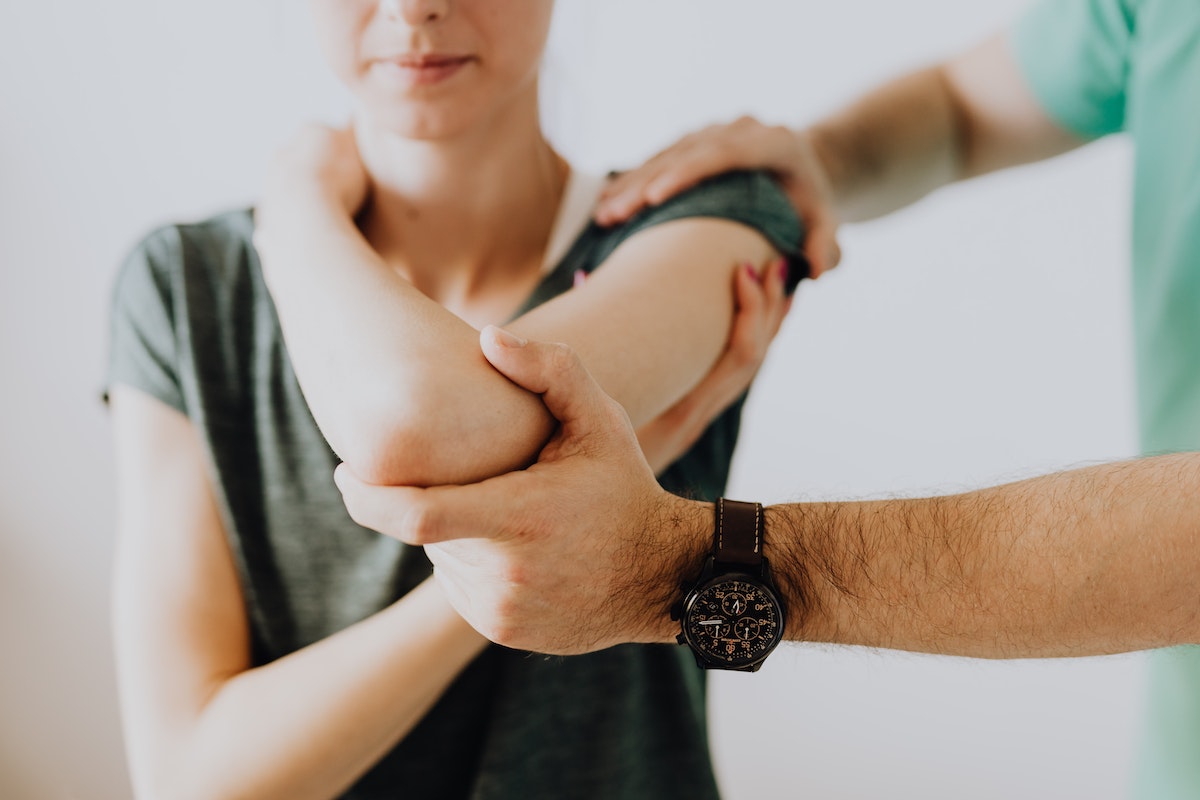Introduction
The shoulder joint is one of the most flexible and mobile joints in the human body, enabling a wide range of movements essential for daily activities and sports. However, due to its frequent use and complexity, the shoulder is prone to pain and injuries. Shoulder joint pain can significantly impact an individual’s ability to perform daily tasks and can be caused by various factors. In this comprehensive 3000-word article, we will explore the causes, symptoms, diagnosis, treatment options, and preventive measures for shoulder joint pain.
Section 1: Understanding the Shoulder Joint Anatomy
The shoulder joint is a ball-and-socket joint formed by the articulation of the humerus (upper arm bone) with the scapula (shoulder blade) and the clavicle (collarbone). The joint is supported and stabilized by various ligaments, tendons, and muscles, including the rotator cuff muscles. The rotator cuff consists of four muscles: the supraspinatus, infraspinatus, teres minor, and subscapularis, which work together to stabilize the joint and facilitate shoulder movements.
Section 2: Common Causes of Shoulder Joint Pain
Shoulder joint pain can arise from various factors, including:
- Rotator Cuff Injuries: Tears, strains, or tendinitis of the rotator cuff muscles due to overuse or traumatic events.
- Frozen Shoulder (Adhesive Capsulitis): A condition characterized by the thickening and tightening of the joint capsule, leading to pain and restricted range of motion.
- Shoulder Impingement Syndrome: Compression of the rotator cuff tendons and bursa between the bones of the shoulder, causing inflammation and pain.
- Bursitis: Inflammation of the bursa, fluid-filled sacs that cushion the joint, leading to pain and swelling.
- Osteoarthritis: Degeneration of the shoulder joint cartilage, causing pain, stiffness, and reduced mobility.
- Tendinitis: Inflammation of the tendons in the shoulder, often caused by repetitive overhead movements.
- Labral Tears: Tears in the labrum, a ring of cartilage that lines the shoulder socket, often caused by shoulder dislocations or overuse.
- Fractures: Breaks in any of the bones of the shoulder, such as the humerus, scapula, or clavicle.
- Biceps Tendinitis: Inflammation of the biceps tendon that attaches to the shoulder, leading to anterior shoulder pain.
- Rheumatoid Arthritis: An autoimmune condition that can affect multiple joints, including the shoulder, causing pain and inflammation.
Section 3: Symptoms of Shoulder Joint Pain

Shoulder joint pain can manifest in various ways, depending on the underlying cause. Common symptoms include:
- Pain: Dull, aching, or sharp pain in the shoulder joint or surrounding areas.
- Stiffness: Difficulty moving the shoulder through its full range of motion.
- Weakness: Reduced strength in the shoulder muscles, affecting daily activities and sports performance.
- Swelling: Inflammation and swelling around the shoulder joint.
- Clicking or Popping Sensations: Audible or palpable sensations within the joint during movement.
- Radiating Pain: Pain that travels from the shoulder to the upper arm or down the arm.
Section 4: Diagnosing Shoulder Joint Pain
Diagnosing the cause of shoulder joint pain typically involves a combination of the following:
- Medical History: The healthcare provider will inquire about the patient’s symptoms, medical history, and any recent injuries or activities that may have contributed to the pain.
- Physical Examination: A thorough examination of the shoulder, assessing range of motion, muscle strength, and areas of tenderness.
- Imaging Studies: X-rays, MRI, or CT scans may be conducted to visualize the shoulder joint’s internal structures and detect any abnormalities or injuries.
- Arthroscopy: A minimally invasive procedure in which a small camera is inserted into the shoulder joint to visualize and diagnose the condition.
- Diagnostic Injections: In some cases, diagnostic injections of anesthetic or contrast dye may be used to pinpoint the source of pain.
Section 5: Treatment Options for Shoulder Joint Pain

Treatment for shoulder joint pain depends on the underlying cause and severity of the symptoms. Common treatment options include:
- Rest: Adequate rest is essential to allow the shoulder to heal and recover.
- Pain Medication: Over-the-counter pain relievers or prescription medications may be used to manage pain and inflammation.
- Physical Therapy: Specific exercises and stretches designed to strengthen the shoulder muscles, improve flexibility, and restore range of motion.
- Hot and Cold Therapy: Applying heat packs or cold compresses can help reduce inflammation and alleviate pain.
- Corticosteroid Injections: Injections of corticosteroids into the joint to reduce inflammation and pain.
- Platelet-Rich Plasma (PRP) Injections: Injections of concentrated platelets from the patient’s blood to promote healing.
- Shoulder Arthroscopy: A surgical procedure used to repair or clean up damaged structures in the shoulder joint.
- Rotator Cuff Repair: Surgical repair of a torn rotator cuff.
- Total Shoulder Replacement: A surgical procedure to replace the damaged shoulder joint with an artificial joint.
Section 6: Preventive Measures for Shoulder Joint Health
Preventing shoulder joint pain involves adopting healthy habits and practices:
- Warm-Up: Always warm up before engaging in physical activities to prepare the shoulder muscles and joints for movement.
- Strengthening Exercises: Regularly perform exercises to strengthen the shoulder muscles, including the rotator cuff.
- Proper Technique: Ensure proper form and technique when engaging in sports or weightlifting to avoid strain on the shoulder joint.
- Avoid Overhead Activities: Limit excessive overhead activities that can put stress on the shoulder joint.
- Ergonomic Support: Ensure proper ergonomics at workstations to minimize shoulder strain.
- Stretching: Perform regular shoulder stretches to maintain flexibility and prevent muscle imbalances.
Conclusion
Shoulder joint pain is a common and sometimes challenging condition that can significantly impact an individual’s daily activities and quality of life. Understanding the potential causes, symptoms, treatment options, and preventive measures for shoulder joint pain is essential for promoting shoulder health and overall well-being. Regular exercise, proper form during physical activities, and maintaining proper posture are all critical components of shoulder care. If shoulder joint pain persists or is accompanied by concerning symptoms, seeking timely medical evaluation is essential for identifying the underlying cause and ensuring appropriate treatment. By adopting healthy habits and seeking timely medical attention when needed, individuals can maintain strong and pain-free shoulder joints.



